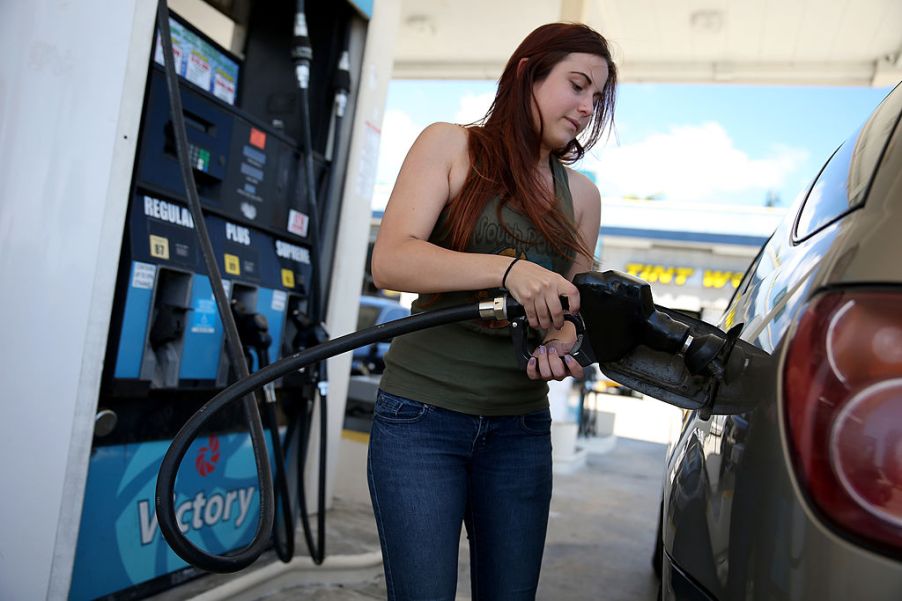
Here’s What Actually Happens if You Use the Wrong Fuel in Your Car
In theory, fueling up your car should be a simple process, but that isn’t always the case. Some cars have specific octane recommendations, and you should never put diesel in a gasoline car or vice versa. But what happens if you make a mistake and put the wrong fuel in your car? The answer depends on just how big a mistake you’ve made.
What happens when you put diesel in a gas car?

One of the most common mistakes drivers, especially inexperienced drivers, make is getting gas and diesel fuel mixed up. It’s a mistake you only make once.
Gasoline and diesel engines are different. They have different flashpoint levels. When you fill the tank of your gas-powered car with diesel fuel, you’ll actually be able to get a few miles down the road before the car uses up the gasoline that was in the lines.
It’s not until the diesel fuel reaches the engine that you’ll discover something is wrong. The engine will completely stop working.
At that point, a trained mechanic is your only recourse. They will drain the gas tank, the fuel lines, and the injectors. But because diesel fuel is oily and dense, all components from the fuel tank to the injectors need to be replaced. If you’re lucky, it will clog the fuel filter and injectors before it ever reaches the engine. If this is the case, a complete fuel system swap should get you back on the road. But if diesel has entered the combustion chamber, you’re looking at an expensive engine rebuild as the engine seizes up.
Instances of diesel fuel going into gas engines were reduced when gas stations switched the size of the pump so that it doesn’t fit into tanks of gas-powered cars. As such, it isn’t an easy mistake to make, even if you pull up to the wrong pump.
What happens when you put gasoline in a diesel engine?

Instances of accidentally putting gasoline in a diesel vehicle are far more common. The nozzle fits, and if you routinely drive a gas-powered vehicle and only use a diesel one occasionally, it’s easy to get forgetful. Because it takes a lot more fuel to start a diesel engine, you won’t get as far with what’s in the lines, and the damage is likely to cost more than if you add diesel to a gas engine.
The first sign you used the wrong fuel is a thick cloud of black smoke pouring out of your exhaust. The damage is nearly instantaneous, as the lower combustion point leads to devastating pre-ignition and engine failure.
Confusing flex-fuel with gasoline
Many newer cars are designed to run on ethanol, which is called Flex Fuel. More than once, individuals have inadvertently put flex-fuel into their gasoline vehicle.
While this isn’t ideal and can impact the vehicle’s ability to operate smoothly, in most cases, no long-term damage is done. Some people report that their car coughed or ran rough until they were able to fill up with gasoline. You should expect to see the check engine light come on.
What happens if I use the wrong octane gas?

Nothing will happen if you accidentally put premium gasoline in your vehicle that usually operates on regular unleaded. However, you should never try putting regular unleaded in a vehicle that is designed to run on premium.
Cars designed to use premium gasoline will experience power loss when burning regular octane gas. In modern cars, the ECU can compensate for the lower octane and adjust engine timing accordingly. You’ll just have reduced throttle response and horsepower. In older cars without such tech, lower octane gas can cause knocking and, if used for too long, engine damage. And though it isn’t a common issue in anything made after the year 2000, it is something keep in mind when fueling your BMW or Volkswagen.



